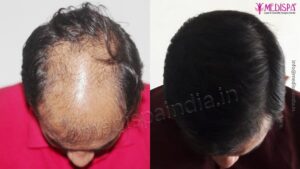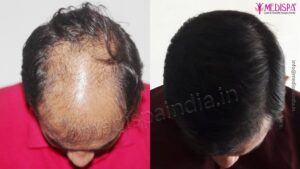
Everyone is aware of the significance that aesthetics and beauty have in a woman’s life. They frequently spend lakhs on cosmetics to get beautiful skin and hair. A desirable asset that cosmetic products aim to provide is long, thick, and luscious hair. However, since your hair texture is entirely determined by genetics, there is no point in trying to improve it by applying any product externally. Instead, you should focus on eating a healthy diet and getting the essential vitamins and minerals that are needed for hair growth.
For women, hair loss is a major problem that can be extremely painful. It might result in emotional distress and detrimental psychological effects. Women who experience hair loss must deal with a lot of social stigma and neglect. Let’s examine the likely causes of hair loss and how often hair transplantation is required in each case.
How does natural hair develop?
Four phases make up the fundamental hair growth cycle: anagen, catagen, telogen, and exogen. 90% of the hairs on the scalp are in the anagen phase, which lasts for 2 to 8 years. The following phase, called catagen phase, lasts for about two to three weeks. The telogen phase follows and lasts for the following two to four months. These stages of follicle growth are followed by the exogen phase, during which the hair sheds.
How to find that hair loss is alarming or normal phenomena?
It is normal to experience hair loss of between 50 and 100 hair strands, but if you experience more than that, it may be an alarming sign that needs to be taken seriously. Flocks of hair falling while washing in the sink, on the pillow, or in the comb while combing are obvious signs of hair loss.
Female hair loss typically involves central thinning, which typically does not involve baldness, making it different from male hair loss patterns. For example, the development of temporal triangles rarely follows hair loss in women. Female hair loss patterns can occasionally involve the front line as well.
Causes of female hair loss?
Blood tests can rule out hormonal changes, particularly thyroid hormone imbalance, as the leading cause of hair loss in women. The condition known as female pattern baldness or androgenic alopecia, which is caused by genes as well, can be diagnosed by a thorough examination of the scalp, which reveals follicles of varying diameters that show follicle thinning. Numerous medical conditions, such as pregnancy, thyroid disorders, anemia, polycystic ovary syndrome, and psoriasis, are linked to hair loss in women.
Hot hair styling tools, hot baths, stress, tight braiding, poor nutrition, increased pollution, and chemical straightening or curling are some of the contributing factors that have increased the incidence of hair loss.
Treatment for female hair loss: The need for hair transplant
Females typically seek out every possible remedy during hair loss, as advised by loved ones and in advertisements. There are many products, both natural and synthetic, on the market that claim to stop hair loss. Although temporary hair loss may benefit from these treatments, there is no way to stop permanent hair loss.
There are also medications for hair loss available in the market, such as:
- Minoxidil (Rogaine): This over-the-counter lotion aims to thicken the hair shafts and slow the progression of hair loss.
- Finasteride: These are prescription-only oral capsules that are intended to slow the rate of hair loss and promote hair growth. This drug stops the production of the DHT metabolite and slows down testosterone metabolism.
These drugs might work in some patients, but there is no assurance of success. Typically, doctors advise patients who are experiencing hair loss and initial baldness to try medications first before undergoing surgery.
Hair transplants must be utilized as a therapy option for hair loss when none of the other drugs appear to be effective. The minimally invasive treatment that requires the most precision is hair transplantation. It includes moving hair follicles from a donor location that is chosen depending on the amount of hair that is present in the recipient bald area. Not to be confused with a regenerative process that can regenerate lost hair follicles is this procedure. The goal of this surgery is to restore hair density by simply moving hair follicles from high density areas to bald areas.
FUT and FUE hair transplant techniques are the main methods used to harvest grafts for hair transplantation in both men and women. In certain ways, female hair transplants differ from male hair transplants. Since the pattern of hair loss in women differs from that in males, female hair transplants require greater precision. Females are strictly forbidden from shaving their heads since being bald could make them seem bad. Then, without shaving the head, tiny openings are made and filled with hair follicles. However, considerable caution must be used because any carelessness could harm the nearby existing hair roots.
Female hair transplant requires high precision because they are difficult. Women’s hairlines differ from men’s because females’ receding lines from temporal triangles are filled. Female hair transplant in India is more expensive than male hair transplants since performing a natural look for women requires exceptional talents and knowledge.
Medispa hair transplant clinic are the pioneers in performing hair transplants in women in Delhi and Jaipur. We provide the most attractive hair transplant outcomes while upholding international standards. We are well-equipped to perform female hair transplants because doing so requires close attention to detail. Dr. Suneet Soni has performed hair transplants for more than 17 years. He had become an expert in performing hair transplants on women thanks to his experience treating more than 10000 different scenarios.







